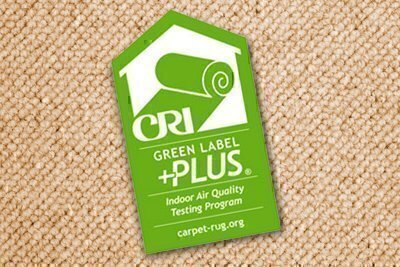Harmful Emissions Possible from New Carpeting
Last updated November 2023

Chemically sensitive or allergy-prone individuals have complained of watery eyes; runny noses; burning sensations in the eyes, nose, and throat; headaches; rashes; and fatigue related to gases caused by newly installed carpets and pads and their adhesives. This problem led to the creation of the Indoor Air Quality Testing Program conducted by the Carpet and Rug Institute (CRI), which develops ways to reduce emissions from carpet.
Under the program, carpet manufacturers submit carpets to an independent laboratory that measures emissions of volatile organic compounds. If emissions do not exceed specified levels during numerous tests the manufacturer can attach the green-and-white “Green Label Plus” shown above.
Look for carpet carrying the Green Label Plus designation. Although these carpets still give off some emissions, the CRI says the average level of emissions from carpets tested has dropped dramatically since the program began.
Even carpet that meets CRI standards must be installed properly to achieve specified emission results. Write into the installation contract: “Carpet must be installed according to Carpet and Rug Institute Standard 105.”
You can take other steps to reduce air problems caused by the installation of new carpeting: If adhesives and/or a pad will be used, request that they have low chemical emissions. Water-based, environmentally friendly adhesives with low emissions are available from numerous manufacturers. Vacuum old carpet before it is removed; this will reduce airborne dust, dirt, and mites. Also, vacuum the subfloor before new carpet is laid. Finally, ventilate the room where the carpet is installed for several days.


